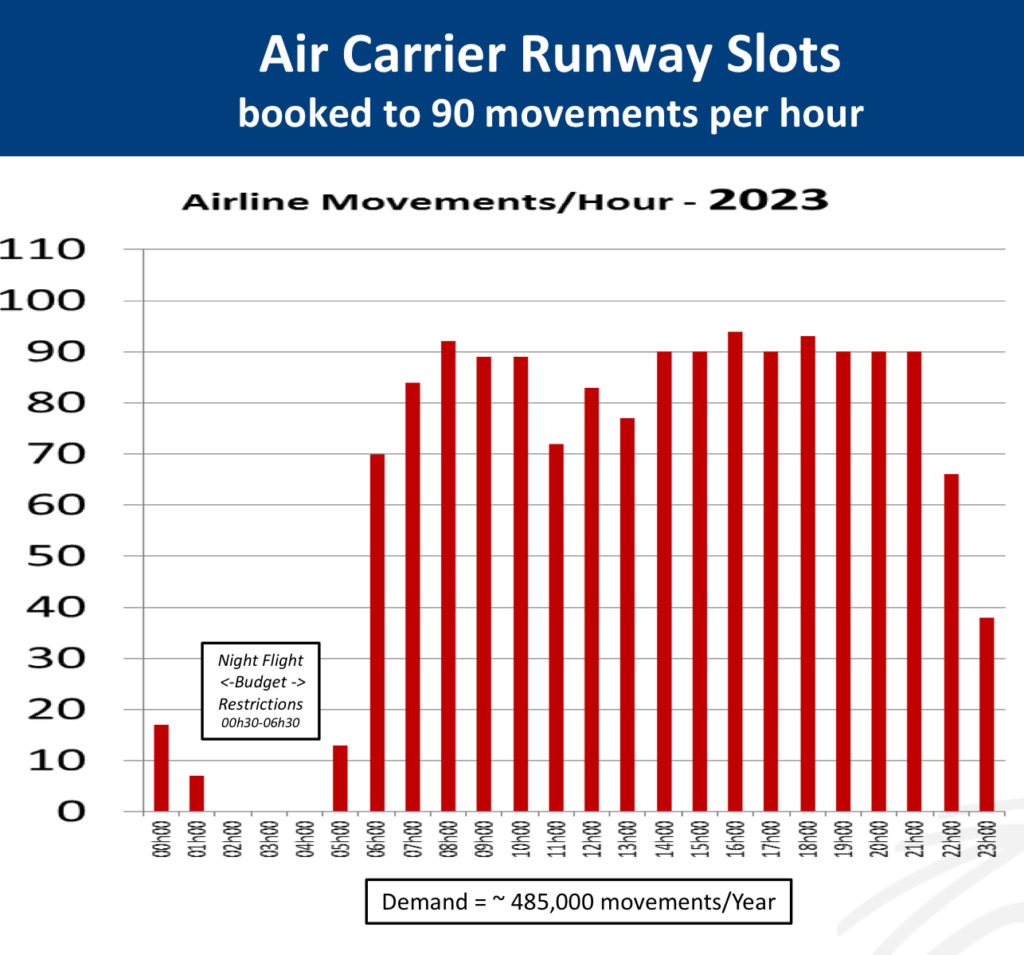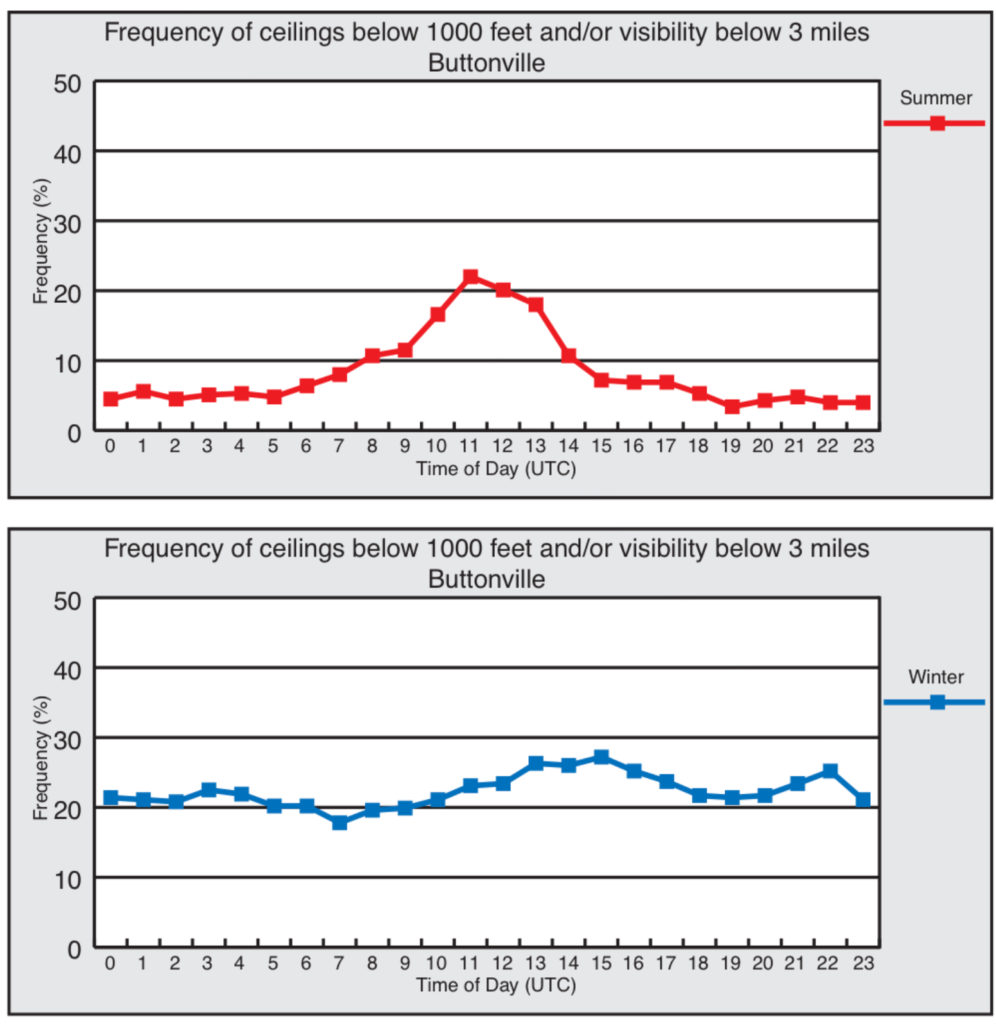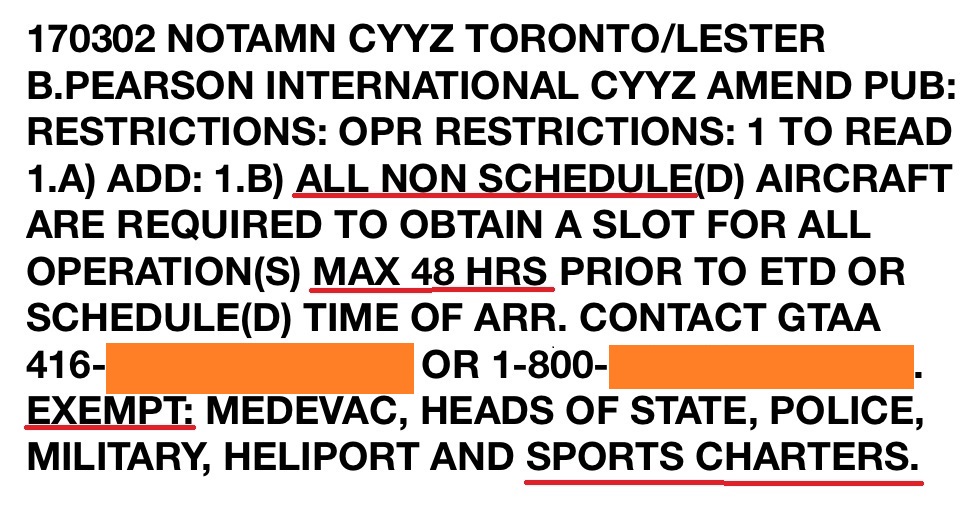
Toronto Pearson International airport is expected to be fully slotted as early as 2019. That means, that in addition to a flight plan, no aircraft will be able to go in or out of Pearson with out a slotted arrival or departure time. So what is a slot, how many does Pearson really have, and why should anyone but a pilot care?
An airport slot is a right granted by an airport owner, in this case the GTAA ( Greater Toronto Airports Authority ), to a scheduled aircraft operator to land or take off during a specific time period. Once assigned, these slots can be monetized. They can be bought or sold, or traded between holders. Slots at other airports, with more transparency on this topic, have been acknowledged as having been sold for millions. One pair even sold for $75 million at a congested airport in Europe.
According to IATA ( International Aviation Transportation Association) Toronto Pearson is now a level 3 fully coordinated airport. This is the highest level of coordination utilized in airports around the world that are at capacity for a significant part of each day. Possibility due to the sensitivity of Pearson’s capacity limitations, there is a lack of transparency around its slot system. Part of the information contained here has not been confirmed by the GTAA. It is based on observations, historical data and the new 2017 GTAA draft master plan.
Pearson has about 90 all weather slots available per hour ( it could vary due to an aircraft’s wake turbulence category). According to the above GTAA-provided chart, most of these slots are expected to be assigned to scheduled carriers by 2023.
Pearson’s 90 all-weather slots-per-hour limit is dictated by several factors. This includes Transport Canada safety rules, including wake turbulence separation standards, and Pearson’s runway layout which allows only three of its five runways to be used at once. This, combined with a “curfew” of 6 hours every night , gives Pearson about half the capacity of the world’s busiest airport, Atlanta, which can use all five of its runways at once.
In addition to the 90 all-weather slots, the new GTAA master plan appears to envision squeezing in additional aircraft by using a technique called visual departures. Although transparency on the details is lacking, on good weather days, the GTAA appears to be planning on squeezing in up to 18 additional aircraft an hour for a total of 108. This allows an aircraft without a regular all weather slot (such as a charter or business jet) to also land or take off under good weather conditions. But even in good weather, this technique is controversial as it reduces safety margins and downloads workload onto pilots during the busiest stages of flight.
Today, aircraft congestion during non-visual weather conditions at Pearson is managed by a combination of short haul “Flow Control” and inflight holds. Flow control is where aircraft are delayed at originating airports, or slowed down in flight, and a hold is where an aircraft flies in circles ( called a holding pattern). By as early as 2023, it is expected that during instrument weather conditions, much of the irregular traffic above the 90 slots will need to be turned away from Pearson or delayed to land after hours. The Weather at Pearson is expected to be unable to support visual departures about 20-25% of the time during the winter months, 10-15% of the time during the summer months.

So in 2023, how bad will it be? Thanks to runway maintenance in March to May of 2017 at Pearson, we had a good look at what a fully slot controlled Pearson airport looks like. During this time the GTAA required all non scheduled aircraft operators to call up to 48 hours before arrival or departure for a “Slot”. In March, on a normal weather weekday, the GTAA’s mathematical model showed that there was still some room available each day to cover all non-airline traffic. In reality, this room often filled up quickly; plus even a bit of bad weather or a late arrival rippled into a disruption impacting numerous aircraft. During the March to May squeeze in 2017, thousands of flights where delayed or cancelled.
During this period, requests for access to Pearson airport by non-scheduled flights where simply turned down. Others that had been provided with a temporary slot where turned away. It was a classic example of a mathematical model being proven to be impractical in real life.

So why should you care if Pearson backs up in anything but perfect weather? One of the first casualties of constant congestion at Pearson will be its night curfew. Aircraft that have been assigned a slot before the night curfew starts, but get delayed due to congestion, still get to land after hours. So the citizens of Toronto can soon look forward to significantly higher jet noise levels at night. The reliability of air travel in and out of Toronto, and potentially, aviation safety margins will also be impacted. But good news, there is a solution and it’s an easy one, simply build new infrastructure. Land has already been set aside inside Torontos passenger catchment area in Pickering for a new airport.
Once a new airport in Pickering is built, Pearson’s slot congestion, and the barrier to commerce it creates, will have a relief valve. Pearson will no longer be expected to stand alone as Toronto’s only jet airport, enabling the GTAA to be more transparent about its slot system and capacity limitations. As a bonus, Air Canada, which currently holds more than half of Pearson’s slots (worth billions?), will have some new competition. Canadians will no longer need to trek to Buffalo to get a reasonably priced flight from the discount carriers that Pearson is unable to accommodate. The bad news, even if we start immediately, Pickering airport is expected to take 10 years to build.
In the near future we will see what a fully slotted Pearson airport looks like, and we will see how GTAA’s slot theory works in reality. One thing that is certain, the GTAA can no longer claim that it still has capacity to handle all of Toronto’s aviation needs. That fact alone clears the path to building Pickering airport.